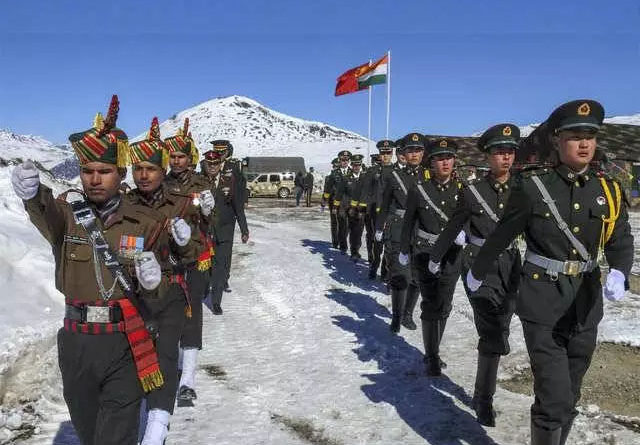‘Indian Soldiers Put Up A Strong Fight; PLA Officer Killed’
22 June, 2020
According to one version, the Chinese side too suffered substantial casualties, with 17 bodies being handed over to them the following day.
New Delhi: Indian troops put up a strong fight at the Galwan Valley on Monday night and the casualties took place after the Chinese side brought in aggressive reinforcements following a tiff over the removal of an illegal structure, according to accounts emerging from the debriefing of soldiers involved in the scuffle.
A senior PLA officer, believed to be the commanding officer , also died in the battle, sources aware of the debriefing, said. This has been corroborated by the account from the Chinese side, conveyed to India during the talks held to defuse the situation last week. Sources said the external affairs minister informed leaders at the all-party meeting that the Chinese side confirmed that it had lost its commanding officer in the deadly clash that left 20 Indian soldiers, including the commanding officer of 16 Bihar Regiment, Col Santosh Babu, dead.
Sources said besides PM Modi’s remarks, two presentations were made –– by defence minister Rajnath Singh and external affairs minister S Jaishankar. Jaishankar explained about the LAC and Indian territory in the region and maintained what is shown in the map is the Indian territory, it is learnt. Sources said he mentioned about his talk with Chinese foreign minister Wang Yi on June 17 and told the leaders that the Chinese side has informed him that a PLA commanding officer was also killed.
While the Army has not given any official account of the incident, sources aware of the developments said that most of the casualties look place at around 9 pm on Monday after the PLA descended in large numbers across the LAC to Patrol Point 14.
According to one version, the Chinese side too suffered substantial casualties, with 17 bodies being handed over to them the following day. As reported earlier, sources said that over 40 stretchers were spotted on the other side –– though it was not known if the soldiers were injured or dead.
Sources said the understanding achieved after the Lt Gen level meeting on June 6 was that both sides would take down temporary structures put up at the Galwan Valley and progressively increase the distance between the troops who were engaged in a faceoff since early May. This understanding was for the faceoffs at Galwan and Gogra, and not the Finger Area of Pangong Tso lake.
On Monday evening, Col Babu went with a small party of 40 men to oversee the disengagement. Given the cordial manner in which talks had taken place earlier, the men had gone in minimal numbers so as not to escalate tensions. However, they noticed the creation of an observation post on the Indian side of LAC. A tent, with a small detachment of Chinese soldiers, had been placed firmly on the Indian side. As setting up of such a post was not as per the agreement, Col Babu insisted that it be removed and was met with resistance from the Chinese side, which eventually disengaged and retreated to its side of the LAC. This structure was then removed by the Indian side.
Sources said that things went south when the Indian team proceeded to the contentious Patrol Point 14 to verify that the Chinese troops had retreated from there as well as per the understanding during the military-level talks. It was at PP 14 that the main skirmish took place. The Indian side noticed an observation post, which would have given the Chinese a clear view of the entire Galwan Valley and the Shyok confluence and the strategic Daulat Beg Oldie road.
As talks were being held to pull down this structure, the Indian patrol party was attacked by a large Chinese force that had surreptitiously gathered in the dark of the night and had occupied some heights as well. “Col Babu got hit in the head but it is not clear if he was specifically targeted. Since he was leading from the front, he was in the line of attack. But once word got out that he had been killed –– it took some time to retrieve the remains –– Indian troops posted at the back joined in and a hand-to-hand fight took place that lasted several hours,” sources said.
The disengagement on Tuesday morning revealed the extent of the skirmish as both sides proceeded to recover the bodies. The illegal Chinese structures had also been demolished during the skirmish. As things stand, sources say that PP 14 is no longer occupied by the Chinese side.
Source: economictimes.com
Courtesy: Opera News/ economictimes.com

